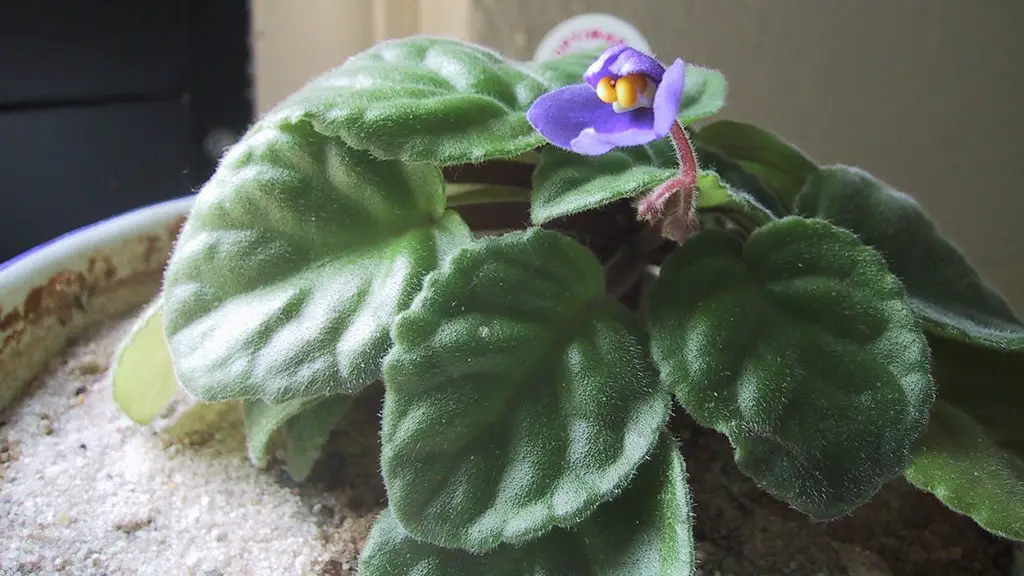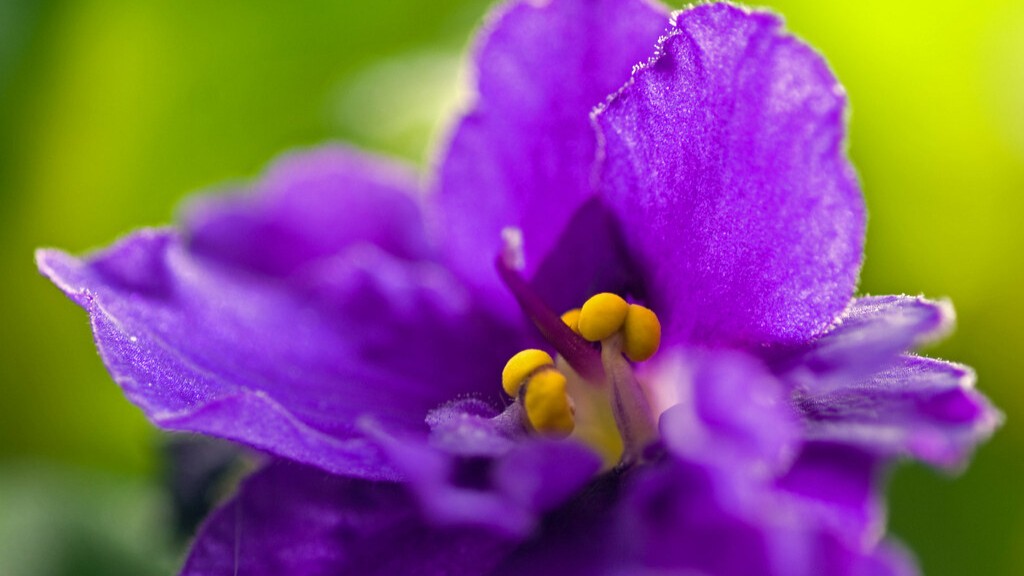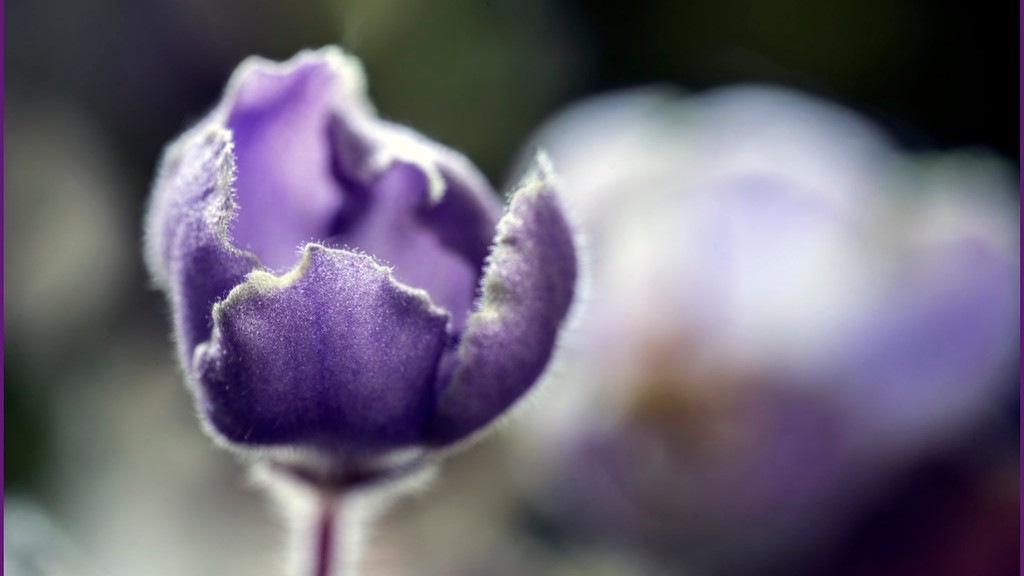African violets are a type of houseplant that originates from Africa. They are a popular plant to have indoors because they do not require a lot of light or maintenance. African violets prefer bright, indirect sunlight and require minimal watering.
african violets like bright, indirect light
Where is the best place to put an African violet?
African violets are indoor plants that need to stay dry. They should be grown in bright, indirect light for the best color and blooms. An ideal location for them is a plant stand three feet away from a west- or south-facing window.
A wicking system is a way of watering your plants that uses a long, thin wick to slowly and evenly deliver water to the roots of the plant. This means that you only have to water your plants once a week, and the plant will never be over-watered.
How do I know when my African violet needs more light
African violets need the proper amount of light to grow and bloom well. Plants that receive insufficient levels of light have thin, blue-green leaves with long petioles. They also don’t bloom well. Plants that receive too much light are stunted and produce small, crinkled, yellow leaves borne on short petioles.
African violets need bright light to bloom, but cannot tolerate hot, direct sun because their leaves are easily scorched by intense light. The best way to provide bright light for your African violet is to place it near a south- or west-facing window. If the light is too intense, you can diffuse it with a sheer curtain.
Is it OK to touch African violet leaves?
While it may be tempting to brush the leaves of your african violet, it is not recommended as it can decrease the plant’s quality and size. Instead, enjoy this pretty plant from a distance!
It is important to water African violets carefully, as they are susceptible to crown rot. Do not mist the foliage, as this may cause permanent leaf spotting. Use room-temperature water, and avoid saturating the crown of the plant.
Can I water African violets with tap water?
If you are unsure about the quality of your tap water, it is best to err on the side of caution and use filtered or distilled water for your African violets. Chlorine, chloramines, and dissolved solids can all be detrimental to the health of your plants, so it is better to be safe than sorry!
While theyLove bright sun, They also need eight hours of darkness every night. Too little sunlight causes them to stretch for the light and produce few or no flowers; too much sun can burn the leaves. An east-facing window is ideal, especially with a sheer curtain to block the sun’s harshest rays
Is it best to water African violets from the bottom
Watering your plants is important to keeping them healthy and Encouraging blooming. You should water from the bottom with room temperature water by placing the plastic grower’s pot in water, and allowing the plant to absorb the water (not more than 30 minutes). Allow the soil around the roots to dry out before watering to prevent root rot.
African violets are a type of plant that need fertilizer to stay healthy throughout the year. During the spring and summer, African violets should be fertilized once every 14 days. In the fall and winter, African violets should not be fertilized at all to prevent over-fertilizing.
What do Overwatered African violets look like?
If you see any of the following in your African violet, it’s likely a sign of overwatering:
Droopy, soft, or mushy leaves
Stunted growth
Yellow leaves
Wilting
Mildew or mold growth
If you think your plant is overwatered, try these tips:
Allow the soil to dry out completely before watering again.
Water at the base of the plant, avoiding the leaves.
If the leaves are wet, remove them to prevent rot.
Increase the frequency of watering only if the soil is dry several inches down.
If you are growing African violets, it is important to make sure that the plant is getting enough water. One way to do this is to place the violet in a water-filled tray, bowl, or saucer. Make sure that at least one inch of the bottom of the pot is immersed in water. Allow the plant to absorb the water for 20 minutes, and then check the topsoil to make sure it is moist.
Where should I put African violets in my house
African violets should be placed in a location that receives bright, indirect light. A site near an east or north window is often a good location. African violets should not be placed in direct sun. If a suitable window isn’t available, African violets can be placed under a fluorescent light fixture containing two 40-watt fluorescent tubes.
If you’re looking for the best pots for African violets, we’ve got a few recommendations for you! Mkono 3 Pack Self Watering Plastic Planter: These plastic planters are a great option for those looking for an affordable, self-watering option. Ceramic Pot with Saucer: This option is a classic choice for African violets. It’s simple, elegant, and provides good drainage. Blue Self Watering Ceramic Planter: This option is a great choice for those who want a little bit of color in their planters. Aquaphoric Self Watering Planter: This is a great option for those who want a self-watering planter that’s also eco-friendly. Self Aerating Self Watering Pot: This pot is a great option for those who want a self-watering pot that’s also aerated, which is ideal for African violets. Terracotta Pot: This is a classic choice for African violets. It’s affordable, and it provides good drainage.
Can you water African violets with coffee?
Coffee grounds are a good source of nutrients for African violets. They are slightly acidic and contain nitrogen, which helps plants grow healthy foliage. Occasionally sprinkling used coffee grounds on top of your African violet potting soil can be beneficial for the plant.
African violets are a type of flower that contains both the male and female reproductive parts. This means that each individual flower can produce both seeds and pollen. In order to produce seeds, the pollen from one flower must be transferred to the stigma of another flower. This process is known as cross-pollination. African violets are usually self-pollinating, meaning that the pollen can be transferred from one flower to another on the same plant.
Warp Up
The light requirements for African violets are quite specific. They need bright, but indirect light. Windows that face north or east are ideal, but south- or west-facing windows can work if the light is filtered with a sheer curtain. African violets also do well under artificial lights, such as fluorescent bulbs.
African violets prefer bright, indirect sunlight. They also like being close to other plants, as this provides them with the humidity they crave. When it comes to watering, African violets should be kept on the drier side, as too much moisture can lead to root rot.





